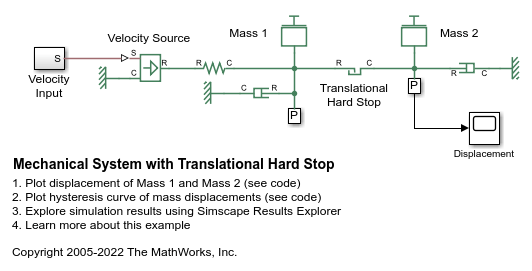Ideal Translational Motion Sensor
Motion sensor in mechanical translational systems
Libraries:
Simscape /
Foundation Library /
Mechanical /
Mechanical Sensors
Description
The Ideal Translational Motion Sensor block represents a device that converts an across variable measured between two mechanical translational nodes into a control signal proportional to acceleration, velocity, or position. You can specify the initial position (offset) as a block parameter.
The sensor is ideal since it does not account for inertia, friction, delays, energy consumption, and so on.
Connections R and C are mechanical translational conserving ports that connect the block to the nodes where motion is being monitored. The block positive direction is from port R to port C. This means that the velocity is measured as v = vR – vC, where vR, vC are the absolute velocities at ports R and C, respectively. The Measurement reference parameter lets you disable port C and measure with respect to ground.
Connections A, V, and P are physical signal output ports for acceleration, velocity, and position, respectively. The visibility of these ports is controlled by block parameters. If you enable port A, the block performs additional computations, to measure acceleration based on velocity. To avoid unnecessary model complexity, it is recommended that in each instance of the block you enable only the ports that you actually use for measurement.



